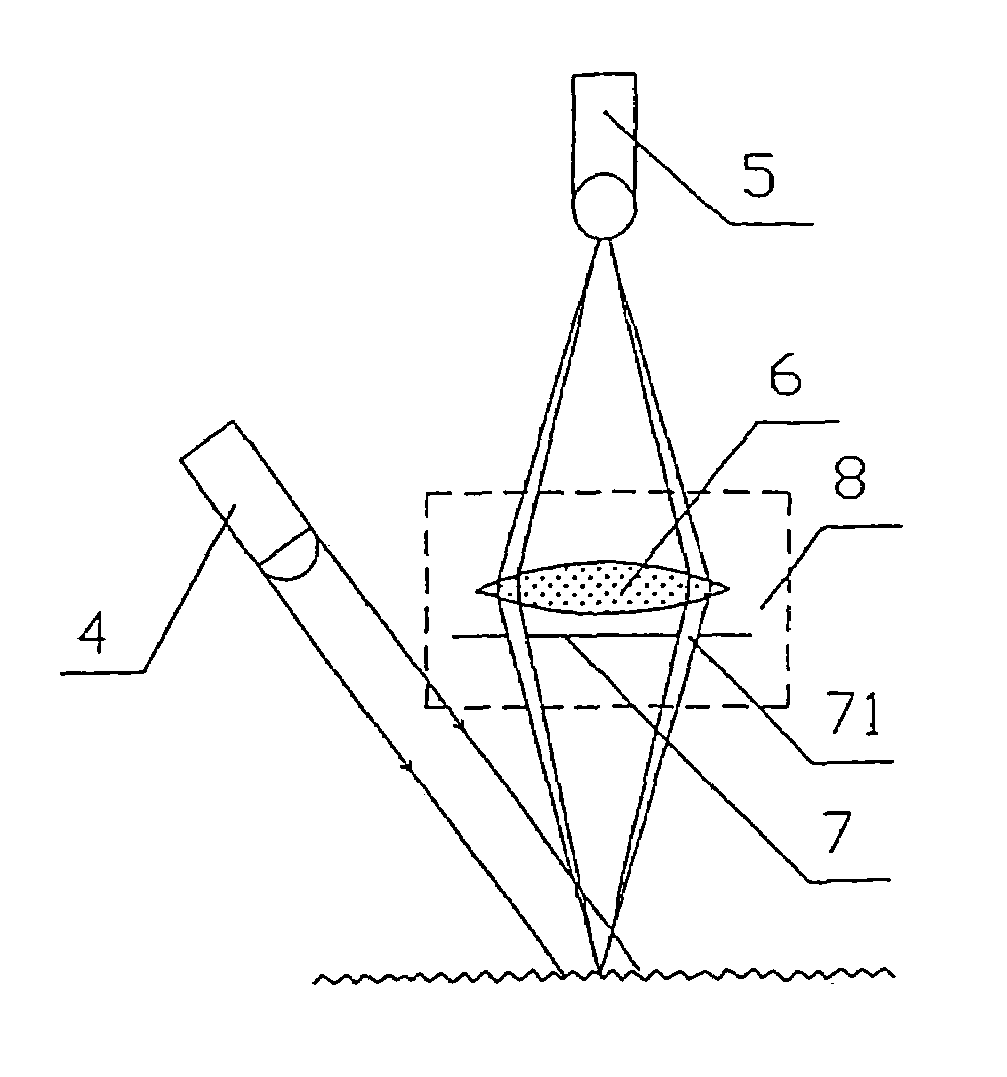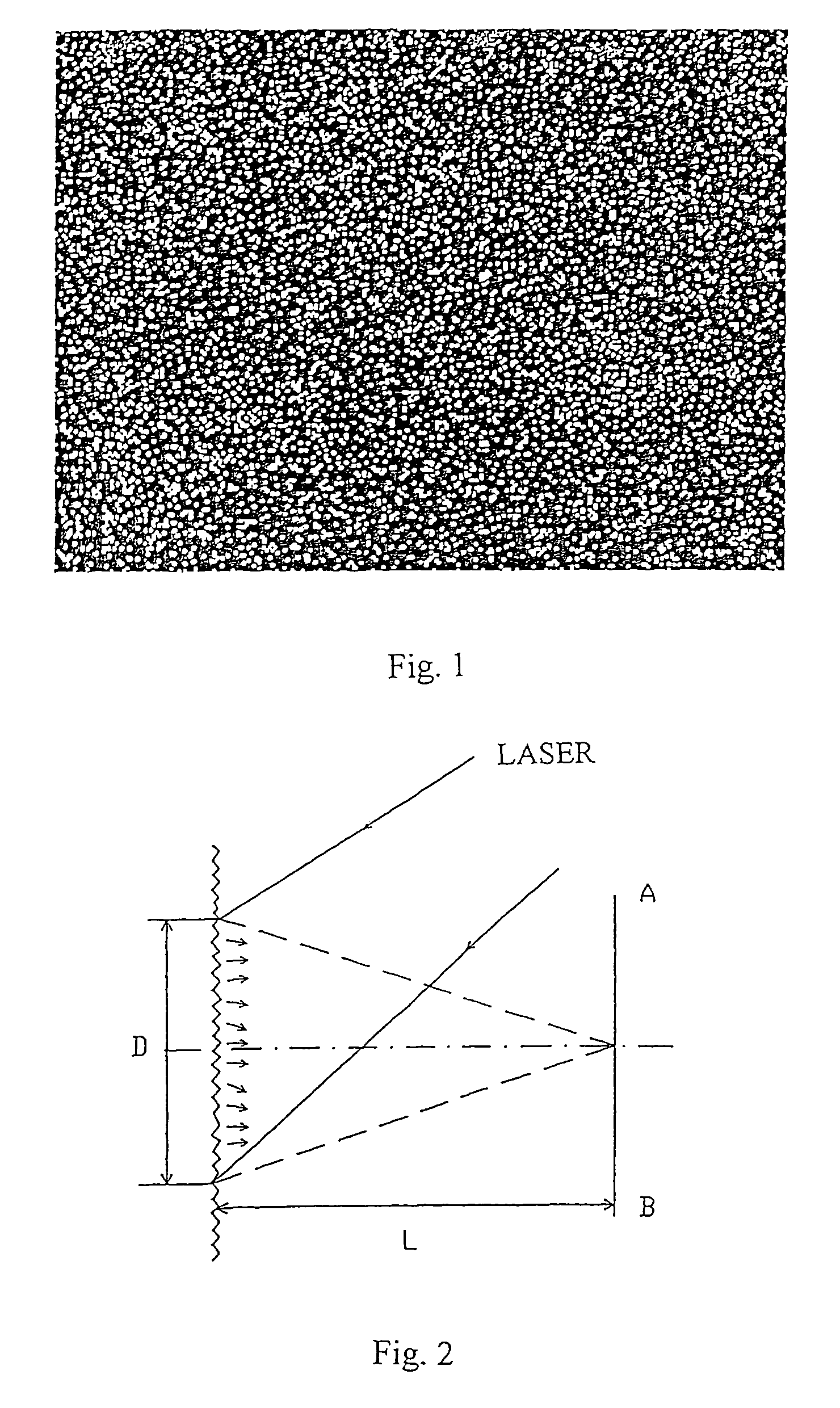Method and device for processing optical signals in computer mouse
a technology of optical signals and computer mouse, which is applied in the field of electric digital data processing, can solve the problems of low precision and vulnerability, now hardly found on the market, and wrong positioning
- Summary
- Abstract
- Description
- Claims
- Application Information
AI Technical Summary
Benefits of technology
Problems solved by technology
Method used
Image
Examples
embodiment 1
[0046]In FIG. 5 and FIG. 6, the device according to the present invention includes a mouse body, and as shown in FIG. 5 and FIG. 6, inside the mouse body, an amplifying and shaping module 1, a direction identifying and counting module 2, and a computer interface circuit 3 are disposed and connected in sequence, and the device further includes a laser device 4 and a photo sensor 5 for receiving laser speckle signals from the object surface illuminated by laser beams. Said photo sensor 5 transfers the received photoelectric signals to the amplifying and shaping module 1.
[0047]Said photo sensor 5 has groups of photoelectric sensing units, wherein each group consists of two or more photoelectric sensing units aligned in a line. After laser speckle signals or laser speckle interference signals from the object surface illuminated by laser beams are received, relevant photoelectric signals are amplified and shaped by the group of photoelectric sensing units, so as to calculate the size of ...
embodiment 2
[0049]As shown in FIG. 7 and with reference to FIG. 6, the difference between the present embodiment and embodiment 1 is that, in the present embodiment, a focusing lens 6 is arranged in the light path for receiving laser speckle signals in the photo sensor 5. As the structure, principle and operation method are the same as those of the embodiment 1, unnecessary details will not be given here.
embodiment 3
[0050]As shown in FIG. 8 and with reference to FIG. 6, the difference between the present embodiment and embodiment 1 is that, in the present embodiment, a beam splitter 8 is arranged in the light path, and the laser beam emitted by the laser device is split into two or more beams by the beam splitter 8 to illuminate onto one or more areas of the surface producing laser speckle interferences, wherein each area illuminated by at least two beams.
[0051]Here, the beam splitter 8 consists of a focusing lens 6 and a pupil 7, wherein said pupil 7 has at least three light apertures 71 arranged in front of or behind the focusing lens 6. The centers of the light apertures 71 are not in a line. Since the centers of the light apertures 71 are not in a line, two-dimensional sampling of photoelectric signals of displacement may be conducted. FIG. 8 shows only two light apertures in one dimension, and the light aperture in the other dimension which is not shown is similar in structure. In the pres...
PUM
 Login to View More
Login to View More Abstract
Description
Claims
Application Information
 Login to View More
Login to View More - R&D
- Intellectual Property
- Life Sciences
- Materials
- Tech Scout
- Unparalleled Data Quality
- Higher Quality Content
- 60% Fewer Hallucinations
Browse by: Latest US Patents, China's latest patents, Technical Efficacy Thesaurus, Application Domain, Technology Topic, Popular Technical Reports.
© 2025 PatSnap. All rights reserved.Legal|Privacy policy|Modern Slavery Act Transparency Statement|Sitemap|About US| Contact US: help@patsnap.com



